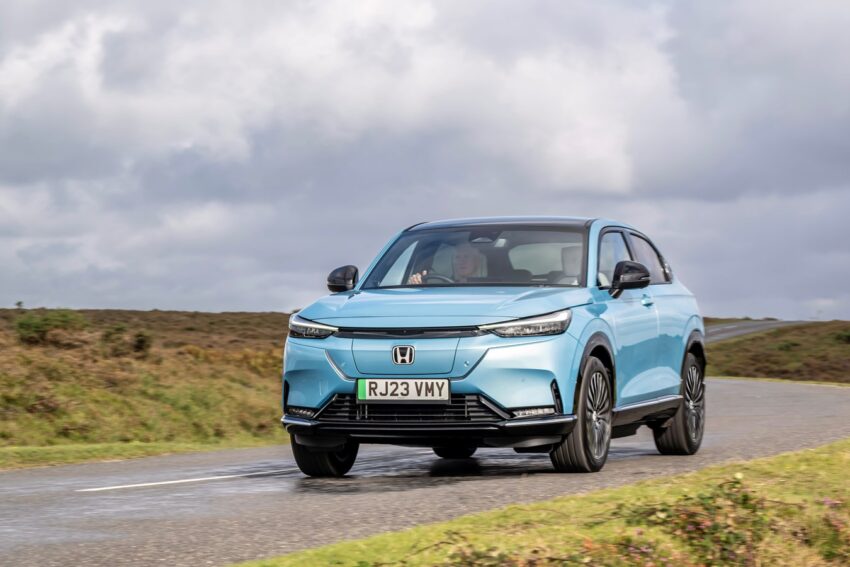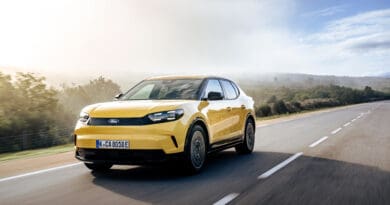Honda e:Ny1 review: A masterclass in mediocrity
The Honda e:Ny1 is the Japanese brand’s successor to the lovable but flawed e, but does this rival to the Kia Niro, Peugeot e-2008 and Volvo EX30 offer a more complete package?
Honda’s first EV – the Honda e – was a glorious failure. Based on a well-received concept car, the city car had brilliant looks and an innovative and stylish interior, but an appalling range and comically high asking price.
The e:Ny1 is a bit more conventional, it is a B-segment SUV in the vein of the Jeep Avenger, Peugeot e-2008 and Hyundai Kona. Think of it as an all-electric partner to the hybrid HR-V and you’re not far off. But is there more to it than just a silly name?
Design, interior and technology
That relationship to the H-RV is certainly apparent in the e:Ny1’s looks.
Honda says its EV has a smooth, flowing design that sets it apart, but – from the angled slimline headlights and flat face to the dropping roofline and rear lights that stretch across the tailgate – there are a lot of similarities.
The e:Ny1 has shorter overhangs and a slightly wide track to give it some presence on the road and the slatted grille of the HR-V is replaced by a neat rotating panel that hides the central charging port. There’s also the white Honda ‘H’ badge that will mark out the firm’s future EVs.
Inside, bright materials create a welcoming airy feel and there’s minimal clutter around the cabin. Those in the front will have enough room to get comfortable and there’s an impressive amount of space in the back seats, too, plus a 344-litre boot that is big enough for a weekly shop or a couple of suitcases but can’t match more practical rivals.
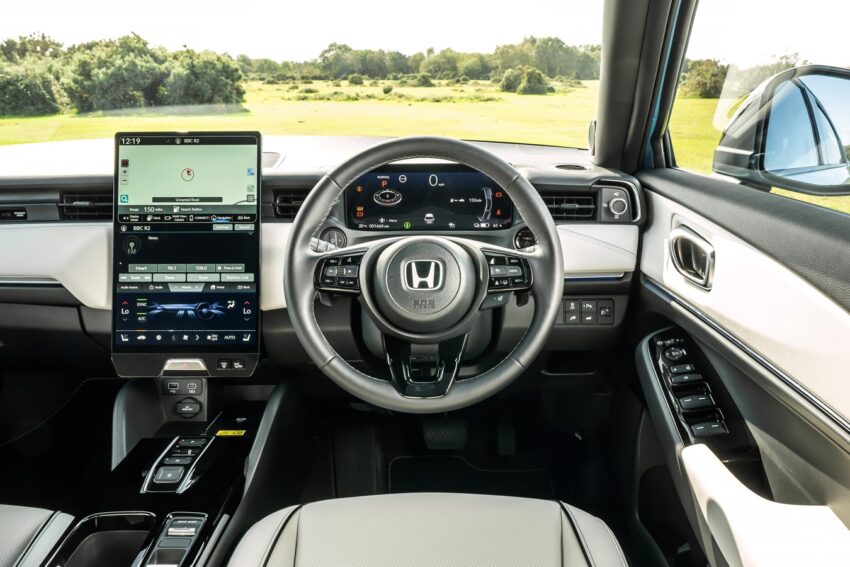
Our car featured what Honda boldly calls a panoramic sunroof and is one of the oddest pieces of design I’ve seen in years. There’s a full-length glass roof visible from outside the car but in the cabin it’s split by a large crossmember, with a tiny sliding cover up front and two removable flexible covers in the rear. Bizarre and impractical since there’s nowhere to store them.
Like most of its rivals, the e:Ny1 offers a digital instrument display for the driver and a large central touchscreen, which features a new ‘zoned’ interface for climate, media and navigation controls. Unfortunately you don’t seem able to modify these three sectors and they all use a uniform white text on black background, so it’s a big generic mess. What’s worse, is that Honda’s user interface is still among the least responsive and ugliest on the market. I’m sure you’d get used to it but, like many elements of this car, rivals do it better. There is, thankfully, wireless Android Auto and Apple CarPlay.
Battery, motor and performance
The e:Ny1 uses a 61.9kWh battery to power a 201bhp motor. That’s a very similar setup to the Kia Niro and Hyundai Kona, and offers a little more power and capacity than the various Stellantis models.
However, Honda only manages to get 256 miles of range out of that battery, compared with more than 280 from the Hyundai/Kia pair and nearly 300 from the long-range Volvo EX30. The Stellantis cars manage similar range with a noticeably smaller battery. And while all its rivals offer at least 100kW charging, the Honda is pegged at 78kW, meaning a 10-80% charge takes around 45 minutes.
My own experience of the e:Ny1 suggests you shouldn’t expect a real-world range of much more than 200 miles and you’ll have to try hard to match the official efficiency of 3.4m/kWh. The air con seems to sap a remarkable amount of power and in winter the lack of heat pump is likely to be acutely felt. For some people, 200 miles is more than enough, the issue is that for similar money there are cars that will significantly outstrip that.
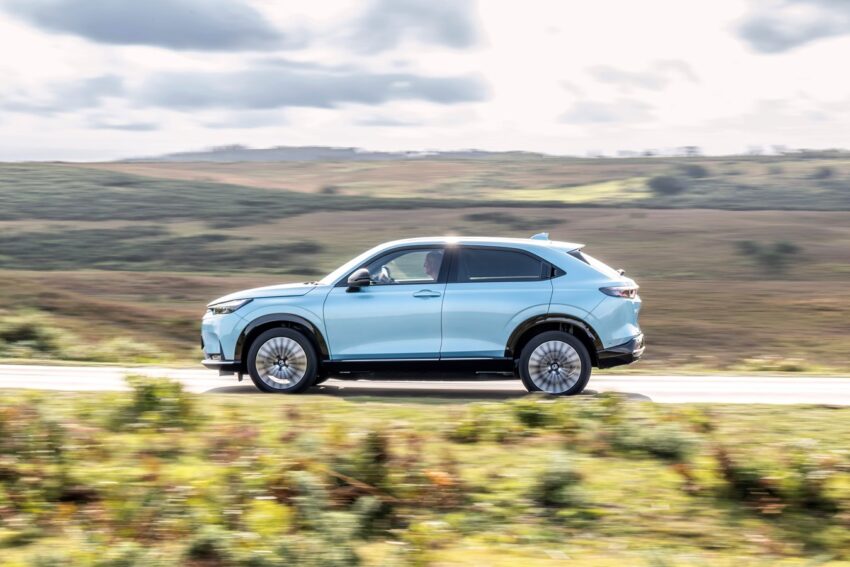
On the move, the e:Ny1 fits in nicely with its rivals in being largely unremarkable. A 0-62mph time of 7.6 seconds is perfectly acceptable and the front-mounted motor is responsive enough, if noisier than you might expect. The steering is accurate but largely lifeless and while body control is respectable, the ride can be caught out by bad road surfaces, when it feels overly firm.
There’s not much fun to be had here but there’s not much to complain about, either.
Price and specification
A few months ago Honda knocked £5,000 off the e:Ny1’s price, partly in response to criticism over its steep initial cost. That has brought it down to just under £41,000 for the Elegance trim and £42,895 for the Advance version I drove. It’s certainly better than it was but it’s still no bargain when rivals start in the mid-£30,000s and you can have the larger and plusher Nissan Ariya for under £40,000.
There are just the two trim levels and there’s not a huge amount between them. There’s a generous amount of kit, including heated seats, LED lights, wireless smartphone mirroring, a rear-view camera and a comprehensive driver assistance package ranging from cruise control to road departure mitigation.
The Advance spec adds a heated steering wheel, powered tailgate and a premium sound system as well as that comically ill-named panoramic sunroof. There’s also more parking assistance in the form of more sensors, a 360-degree camera, and semi-automated parking ‘pilot’. It’s a decent specification but offers very little that cheaper alternatives like the Hyundai Kona N Line don’t also have.
Verdict
I had hoped that an electric equivalent of the impressive HR-V might be the car to sort out Honda’s electric strategy after the extremes of the e.
The e was brilliant in some ways and abysmal in others. The e:Ny1 doesn’t manage to touch either of those extremes, sitting in the middle ground being neither outright awful or particularly brilliant.
It’s a perfectly adequate machine, but in a market where there is such variety and so many rivals doing things better that’s not quite good enough.
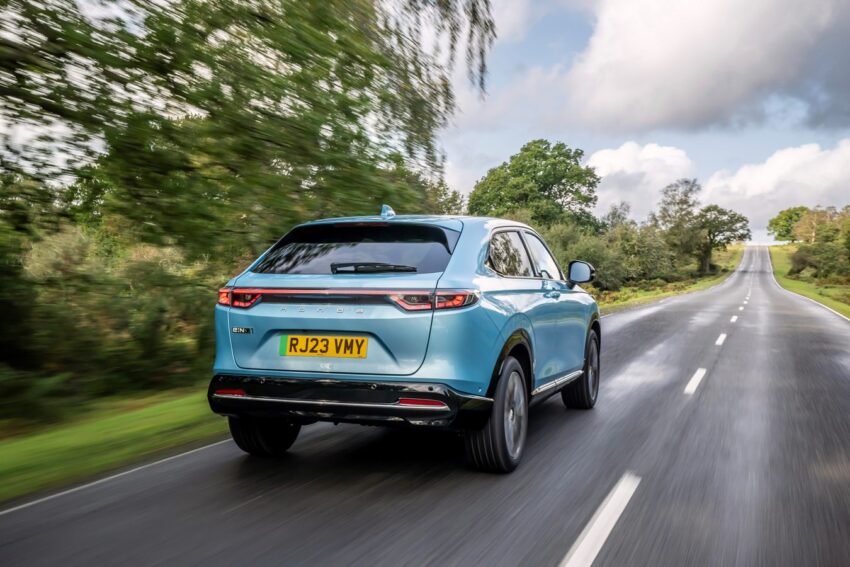
Honda e:Ny1 Advance
- Price: £42,845
- Powertrain: single-motor, front-wheel-drive
- Battery: 61.8kWh
- Power: 201bhp
- Torque: 229lb ft
- Top speed: 99mph
- 0-62mph: 7.6 seconds
- Range: 256 miles
- Consumption: 3.4m/kWh
- Charging: up to 78kW

